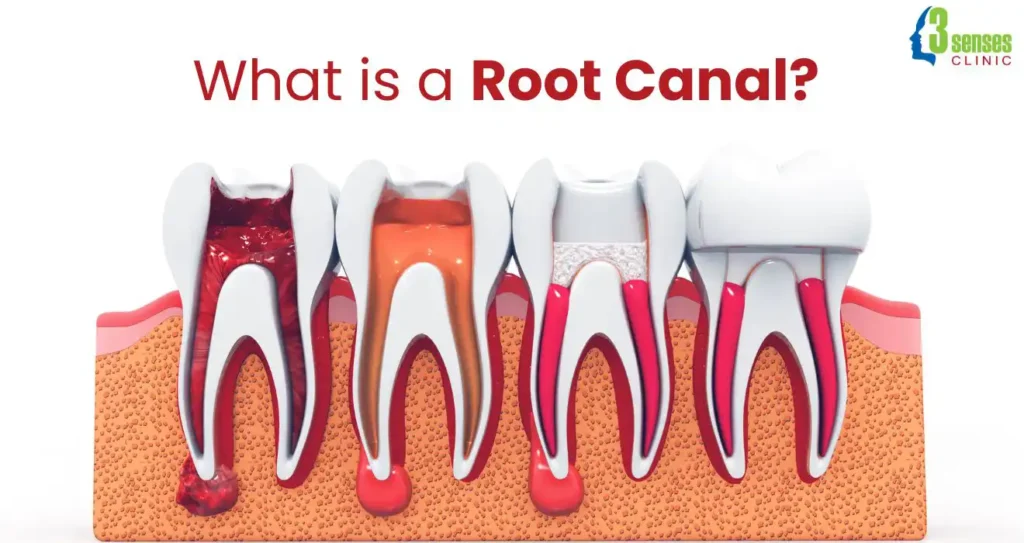What is a Root Canal? Everything You Need to Know About RCT Treatment

Dental health is a vital part of our overall well-being, yet it often gets overlooked until the pain becomes unbearable. One of the most commonly recommended treatments for severe tooth pain or decay is a root canal, also known as RCT treatment. If you’ve been told you need one or you’re simply curious, this blog will help you understand what is a root canal, when it’s needed, what the process involves, and how to manage the discomfort.
What is a Root Canal?
A root canal is a dental procedure designed to save a severely damaged or infected tooth instead of removing it. Inside each tooth, beneath the white enamel and hard dentin layer, there’s a soft tissue called pulp. This pulp contains nerves, blood vessels, and connective tissue. When the pulp becomes infected or inflamed due to deep decay, repeated dental procedures, or trauma, a tooth root canal treatment is required to remove the damaged pulp and protect the tooth from further harm.
Also Read: Understanding Throat Diseases: Names, Symptoms, and Types of Infections
When is a Root Canal Needed?
Not every toothache calls for a root canal, but certain signs clearly indicate that an RCT might be necessary. Here are the most common situations when a root canal is needed:
- Persistent tooth pain: A sharp, throbbing, or lingering pain that doesn’t go away may signal pulp infection.
- Sensitivity to hot and cold: Especially if the discomfort continues even after the stimulus is removed.
- Swollen gums: Inflammation or swelling near the affected tooth could mean the pulp is infected.
- Darkening of the tooth: A change in tooth color might be a sign that the internal tissue is damaged.
- Pimples on the gums: These could indicate an abscess or infection that needs to be addressed.
If you experience any of these symptoms, it’s essential to visit a root canal dentist promptly for an evaluation.
The Root Canal Treatment Process
Many patients get anxious when they hear the words “root canal,” but modern dental technology has made the process smoother and less painful than ever before.
Here’s what typically happens during an RCT:
- Diagnosis and X-ray: The dentist examines the tooth and takes X-rays to assess the extent of damage.
- Anesthesia: Local anesthesia is applied to numb the area and ensure comfort throughout the procedure.
- Access Opening: A small opening is made in the crown of the tooth to reach the infected pulp.
- Cleaning the Canals: The dentist removes the infected tissue and thoroughly cleans the canals using special tools.
- Filling and Sealing: Once clean, the canals are filled with a biocompatible material (usually gutta-percha) and sealed.
- Crown Placement: In most cases, a crown is placed on the tooth in a follow-up visit to restore strength and function.
Also Read: The Importance of Oral Health: A Guide to a Healthy Smile
Root Canal Pain: What to Expect
One of the most common concerns people have is about root canal pain. Contrary to popular belief, root canal procedures are not extremely painful. In fact, they are meant to relieve the intense pain caused by the infected tooth.
During the procedure, local anesthesia ensures that you don’t feel pain. After the treatment, some tenderness or discomfort may be experienced for a few days, which can be managed with over-the-counter pain medications. Severe pain after a root canal is uncommon, and if it occurs, you should contact your root canal dentist right away.
Why Choose a Root Canal Over Tooth Extraction?
Saving your natural tooth through a tooth root canal has several benefits over extraction:
- Maintains natural chewing and biting force
- Preserves the appearance of your smile
- Prevents other teeth from shifting
- Avoids the need for dental implants or bridges
While extraction may seem simpler, replacing a missing tooth later can be more complicated and expensive.
Caring for Your Tooth After RCT Treatment
A root canal-treated tooth can last a lifetime with proper care. Here’s how to maintain your dental health post-treatment:
- Practice good oral hygiene: Brush twice daily and floss regularly.
- Avoid chewing on hard foods: Especially until the crown is placed.
- Attend regular dental check-ups: Your dentist will monitor the tooth and ensure everything is healing well.
- Get the crown fitted: Don’t delay the crown placement, as it protects the treated tooth from breaking.
Finding the Right Root Canal Dentist
Choosing an experienced and skilled root canal dentist can make all the difference in how comfortable and successful your treatment is. Look for a dentist who uses modern tools and imaging technology, follows sterilization protocols, and takes time to explain your treatment options.
Online reviews, word-of-mouth referrals, and a quick consultation can help you find someone you trust.
Conclusion
Understanding what is a root canal and why it’s necessary can ease the fear many people have about this treatment. RCT treatment is a safe and effective way to relieve pain, eliminate infection, and save your natural tooth. Whether you’re experiencing severe toothache or have been advised to undergo a root canal, consult a qualified root canal dentist to ensure you get the best care.
Remember, delaying treatment can lead to more complications and costlier procedures later. Prioritize your dental health—it’s worth the smile!

